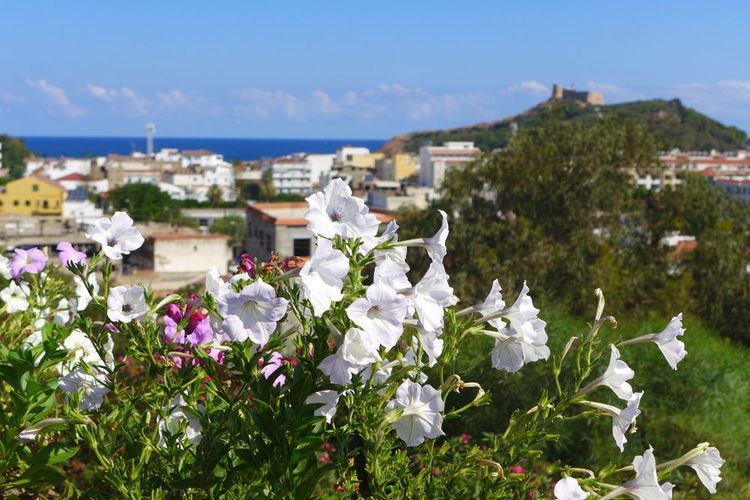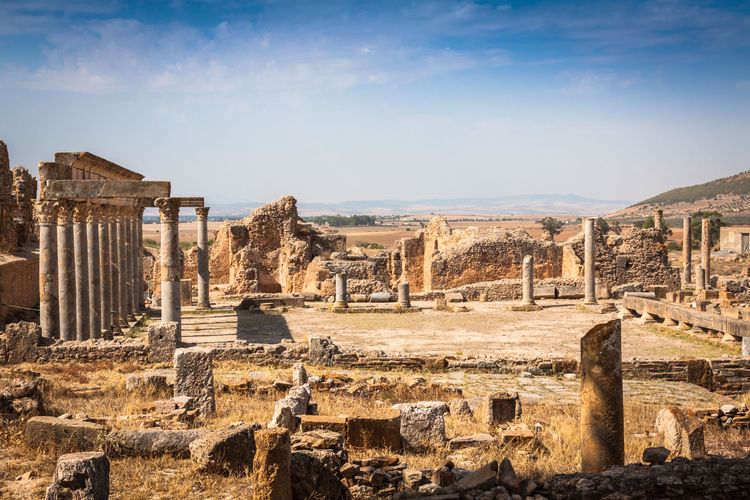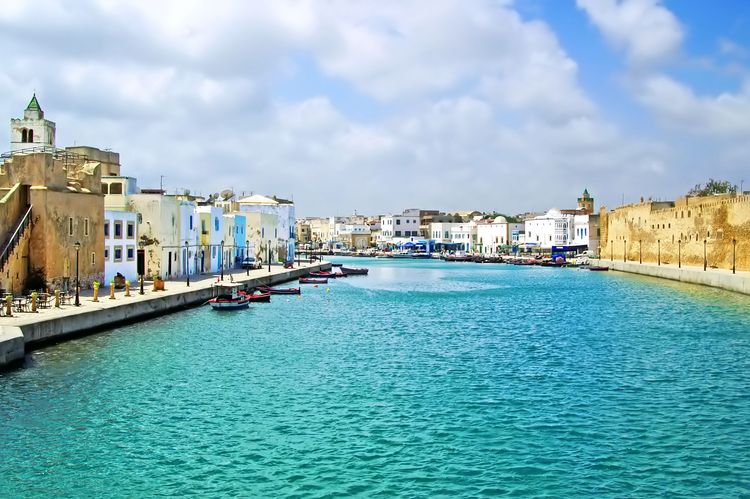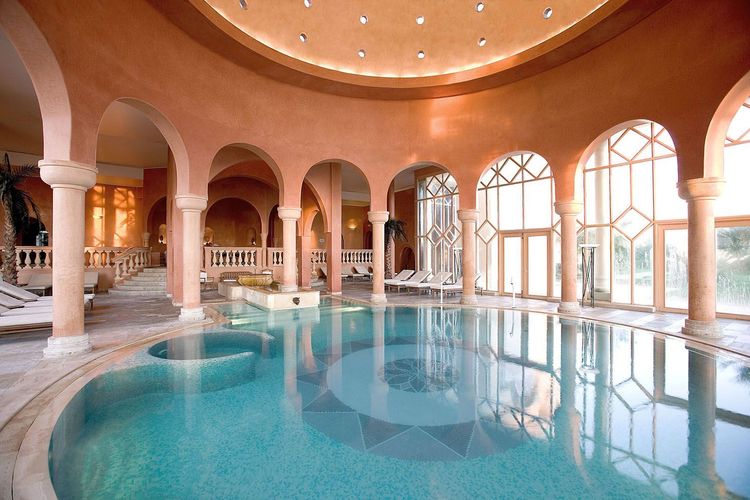Hammamet and Northern Tunisia
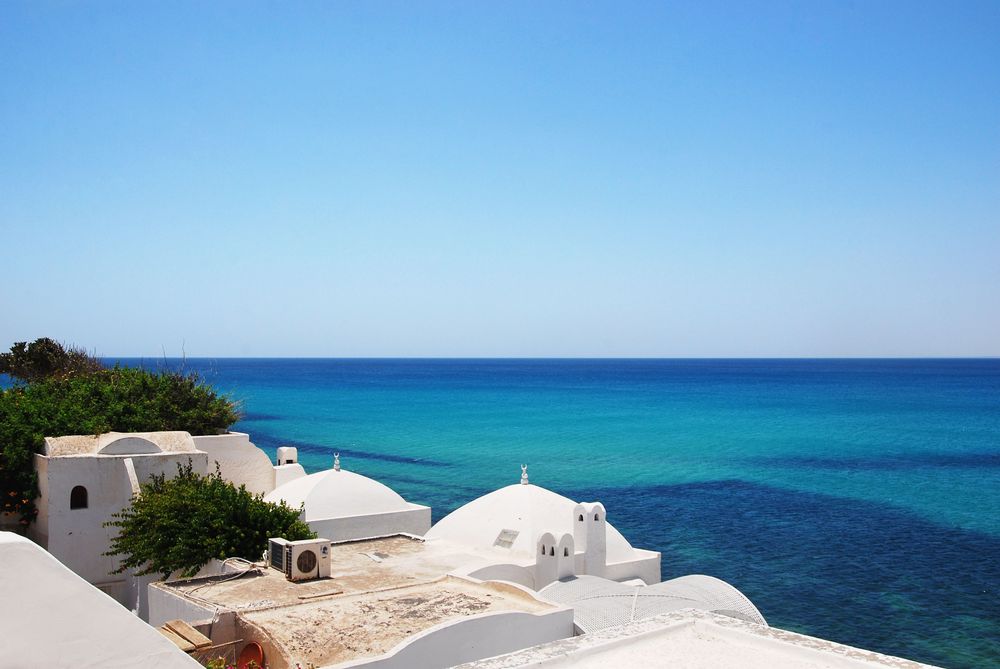
This is one of the leading resorts on the Tunisian Riviera. Along the Gulf of Hammamet, from Yasmine Hammamet to Nabeul, the hotels follow one another in close succession: you don't come here to isolate yourself. There's golf, thalassotherapy, lounging on the beach, amusement parks in Yasmine Hammamet, water sports and other leisure activities galore. But Hammamet, like Nabeul, is also a medina with its Great Mosque and a Kasbah.
A cultural heritage that can be complemented by a visit to the archaeological sites of Thuburbo Majus, Dougga, Bulla Regia and Chemtou, inland. The highlight of the trip is the capital, Tunis, with its UNESCO-listed medina, the Bardo Museum and the prestigious site of Carthage. And the charming village of Sidi Bou Saïd. And then there are the more intimate towns of Tabarka and Bizerte, on Tunisia's northern coast.

Then there's Hammamet and its old medina, a real one this time, with its charming alleyways protected by ramparts, where it's good to get lost. Enjoy the colourful fishermen's boats, the view from its 15th-century fort and the beauty of its Great Mosque.
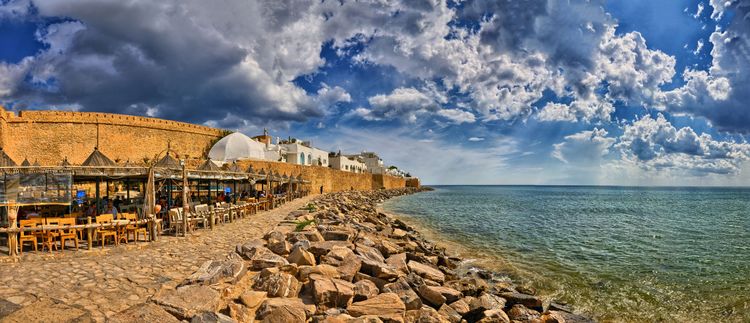
Less well known than its neighbour Hammamet, 10km further south, Nabeul, capital of Cap Bon, is a charming seaside resort on Tunisia's north-east coast. It doesn't party until dawn like Hammamet, but it does have a friendly atmosphere, family clubs and uncrowded beaches. Nabeul is also one of Tunisia's pottery capitals. Its medina is much more authentic and well-preserved than Hammamet's.
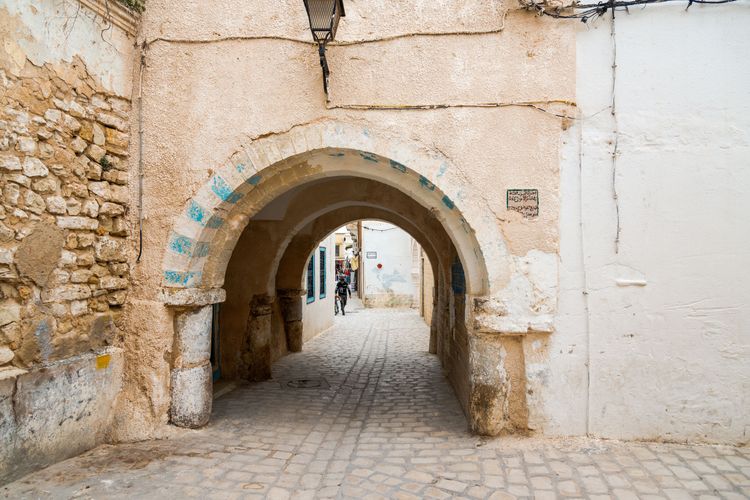
On the other side of Cap Bon lies the capital Tunis, renowned above all for its medina, one of the most beautiful in the world and a UNESCO World Heritage Site. From here, it's less than half an hour to pleasant beaches and must-see sites such as the village of Sidi Bou Saïd and the ruins of Carthage.
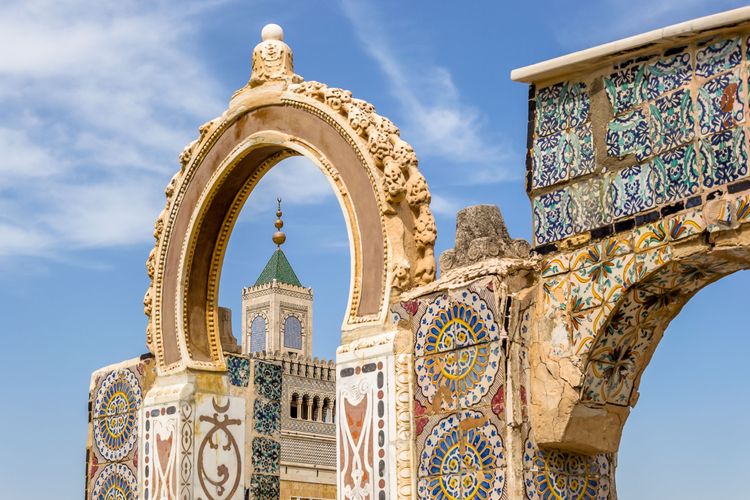
Last articles

7-day itinerary for Northern Tunisia
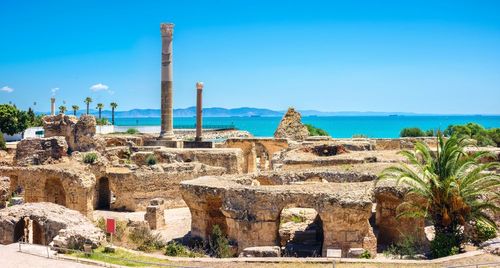
The mysteries of Carthage, the jewel of Tunisia
The must-sees
How to get there?
Tourists staying in Hammamet have the choice of landing at either Tunis or Monastir airport. Tunis airport is 70km to the north-west, a 1-hour journey. Monastir airport is 115 km further south, so allow 1h30 for transfers. Most hotels have their own shuttle service. Since 2010, it has been possible to land at Enfidha airport, which is closer (57 km to the south, or 40 minutes), but little used. It mainly handles charter flights, mainly English and German, and unfortunately very few French airlines or airlines departing from France. There is also Tabarka international airport, on Tunisia's north-west coast, 10km from the old town. However, there are very few flights from France...
✈️ Airline tickets to Tabarka
Low cost flights to TabarkaWhere to stay?
Whether it's a lively club, a top-of-the-range resort, a palace, a thalasso hotel or a charming dar, you're bound to find what you're looking for in the Hammamet region! The establishments are generally very good value for money and particularly well suited to families.
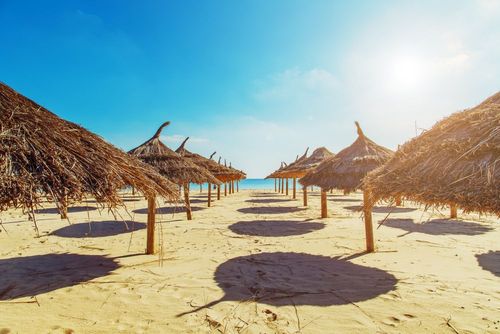
Practical information
Tunis and Monastir are a 2h40 flight from Paris. Both airports are served by Transavia, an Air France subsidiary, from Orly, and by Tunisian airlines Tunisair and Nouvel Air, the latter from Roissy CDG.
COVID info
For Covid-19, you will need to present the full vaccination certificate, otherwise you will be sent for a PCR test... No vaccination is required to enter Tunisia. An identity card valid for at least six months after your return is acceptable if you've bought a package, but you'll need to present your passport, valid for at least six months after your return, if you've only bought a plane ticket. Between you and me, you might as well take your passport just to be on the safe side...
Golf and thalassotherapy
Admittedly, the sea is not as beautiful as in Djerba, but you can still take advantage of the beautiful, well-maintained beaches. One good point is that facilities (showers, sunbeds, parasols, etc.) are included for those staying in hotels. The water sports centres are open from April to October. The Hammamet region is not just about lazing on the beach. The area is home to several thalassotherapy centres, whether in Yasmine Hammamet, Hammamet, Tunis or Tabarka. You can treat yourself all year round, even in winter. For golf lovers, the choice is yours: at Hammamet Sud, between Yasmine Hammamet and Hammamet, you can opt for the Citrus golf course in the heart of a pine forest. Designed in 1927 by French architect Yves Bureau, the Carthage golf course is the first in Tunisia and one of the oldest in Africa. The Résidence Golf Course was designed by the famous architect Robert Trent Jones II. It is part of the luxury hotel The Résidence Tunis. But the most technical golf course is Tabarka!
Must-try specialities?
Many hotels serve excellent lemonades. The inevitable couscous (with chicken or lamb) is served at club buffets during Tunisian evenings. Try the country's other recipes too: Fatma's fingers (puff pastry stuffed with chicken breast, potatoes and capers), tajine (meat and potato omelette), brick (pastry triangle filled with tuna and a semi-cooked egg). Don't hesitate to leave the hotels and explore the medina: linger in one of the Moorish cafés for a mint tea accompanied by a delicious Tunisian pastry.
Beware of jellyfish
Beware of seaweed and jellyfish. The former are washed up on the beach by sea currents when the sea is rough. They are most common in spring and autumn. They are harmless, but unsightly. Hoteliers remove them sparingly, as they play an active part in the beach ecosystem. Jellyfish, on the other hand, 'bloom' in summer, as soon as the water temperature rises above 26°C. Depending on the weather, these conditions occur in July-August, sometimes as early as the end of June, and as late as September.
What to take back with you
In the old souks, you'll find plenty of trinkets to haggle over: Arab-Berber-style leather masks, terracotta or ceramic ashtrays, chiselled iron mini trays, babouches, Tunisian doors concealing a small mirror, dates, stuffed camels, Tunisian pastries, woven-mat shopping bags.... You can also take home a fouta, a large cotton towel typical of Tunisia. In Tunis, you'll find all the country's handicrafts: wrought iron, Berber pottery, ceramics, lamps, vases and decorative objects in blown glass, rugs, mosaic table tops and carpets (to hang on the wall or lay on the floor). The area around Carthage (Gammarth and Sidi Bou Saïd) is also full of artists' studios where you can admire unique works, paintings and sculptures. For a closer look, check out the private collections of The Residence hotels and the Hasdrubal chain.
Haggling goes on daily in the souks. We therefore advise you not to accept the initial price given by the vendor, but to negotiate as much as possible by setting yourself a maximum amount. In this way, you can reduce the price of the product you buy by 20-50%. Spices are not very expensive in Tunisia. To avoid rip-offs and haggling, you can also visit fixed-price shops. A word of advice: don't wear your hotel bracelet on your wrist when you enter the souks, as this is how touts spot tourists and take them to expensive shops!
Every summer, the sumptuous gardens of the Hammamet Cultural Centre play host to the Hammamet International Festival, featuring theatre, dance and concerts. If you're looking for authentic, traditional Tunisia, you'll be disappointed by the artificial, superficial side of the pasteboard medina of Yasmine Hammamet. Choose the real Hammamet medina and its kasbah! On the other hand, if you like to party, this is the right destination, as is Hammamet. On the other hand, although Nabeul is the most authentic of the three, there's not much to do in the evening...
A word of advice: hire a car to explore Cap Bon, which juts out into the sea to the north of Nabeul. This is an unspoilt agricultural region bordered by beautiful beaches that have not yet been taken over by hotels. However, if you don't want to spend hours in traffic jams, don't use your car in Tunis! There are good public transport links in and around the capital, but it often rains in Tunis, Bizerte and Tabarka in winter.
explore Try out our comparators
It is Easy to travel




